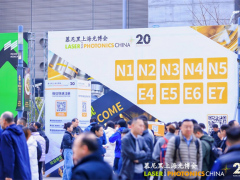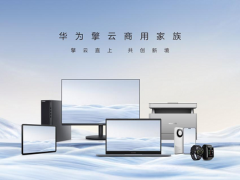伍德麥肯茲:全球液化天然氣需求的長期前景看漲
新的液化天然氣供應(yīng)——尤其是來自卡塔爾和美國的液化天然氣供應(yīng)——將在2025—2026年進(jìn)入市場
即使在對成本通脹的擔(dān)憂中,美國液化天然氣項(xiàng)目的開發(fā)商今年仍將批準(zhǔn)歷史最高的出口產(chǎn)能
據(jù)油價網(wǎng)2023年7月20日報(bào)道,作為液化天然氣出口國,美國和卡塔爾是兩個遙遙領(lǐng)先的領(lǐng)跑者,在未來20年里,這兩個國家最有可能抓住全球?qū)︻~外供應(yīng)能力的需求。
這是伍德麥肯茲的估計(jì),目前全球最大的兩個液化天然氣出口國豐富的低成本天然氣資源是其出口能力增長的關(guān)鍵因素。
此外,伍德麥肯茲表示,美國和卡塔爾還擁有具有競爭力的價格和“精明的商業(yè)合作伙伴關(guān)系”,到2040年前,這兩個國家所占的液化天然氣市場份額將超過60%。目前,這兩個液化天然氣出口巨頭已經(jīng)占據(jù)了全球供應(yīng)量的40%。據(jù)這家咨詢公司稱,美國和卡塔爾,將需要關(guān)注三個關(guān)鍵因素,以便處于下一波液化天然氣供應(yīng)增長的最前沿。這些措施包括控制成本,努力減少液化天然氣項(xiàng)目的碳排放,并押注亞洲液化天然氣需求的持續(xù)增長。
液化天然氣需求前景看漲
伍德麥肯茲的天然氣和液化天然氣專家Massimo Di-Odoardo、Giles Farrer和Dulles Wang表示,全球液化天然氣需求的長期前景是看漲的。到21世紀(jì)30年代中期,全球?qū)⑿枰磕觐~外1億噸的液化天然氣產(chǎn)能來滿足需求增長。與目前的全球液化天然氣供應(yīng)相比,這一數(shù)字增加25%,而且已經(jīng)獲得批準(zhǔn)。
伍德麥肯茲的專家表示,從長期來看,亞洲將成為液化天然氣需求增長的推動力,盡管歐洲目前急于獲得液化天然氣,以取代進(jìn)口管道天然氣,甚至簽訂長期合同。在爆發(fā)地緣政治沖突之前,這種長期合同在歐洲是不受歡迎的。
伍德麥肯茲的分析師們表示:“歐洲的政策重心從天然氣的轉(zhuǎn)向限制了2030年后液化天然氣供應(yīng)商的上行空間。”“此后,亞洲市場將成為關(guān)鍵,因?yàn)閬喼薜貐^(qū)的發(fā)展中經(jīng)濟(jì)體將更加依賴天然氣,同時努力擺脫煤炭。”
今年早些時候,全球最大的液化天然氣貿(mào)易商殼牌公司表示,歐洲對液化天然氣的需求大幅增加,將在短期內(nèi)加劇與亞洲的競爭,并在長期內(nèi)主導(dǎo)液化天然氣貿(mào)易。
殼牌公司表示,新的液化天然氣供應(yīng)——尤其是來自卡塔爾和美國的液化天然氣供應(yīng)——將在2025年至2026年進(jìn)入市場,并在2040年之前看漲這種燃料。殼牌公司指出,到2030年前,大約80%的新增液化天然氣供應(yīng)能力將來自這兩個主要液化天然氣出口國。
然而,這家液化天然氣超級巨頭警告稱,如果沒有新的投資來增加供應(yīng),另一個供需缺口可能會在21世紀(jì)20年代末出現(xiàn)。
下一波液化天然氣供應(yīng)熱潮的成本和勞動力挑戰(zhàn)
隨著利率和供應(yīng)鏈成本的飆升,液化天然氣開發(fā)商將需要限制項(xiàng)目開發(fā)和執(zhí)行中的成本膨脹。伍德麥肯茲表示,能夠做到這一點(diǎn)的液化天然氣開發(fā)商將更有能力抓住全球液化天然氣需求增長的機(jī)會。
貝克特爾能源公司全球業(yè)務(wù)部門總裁Paul Marsden7月早些時候曾對路透社記者表示,為下一波美國液化天然氣出口設(shè)施招聘和留住建筑工人和運(yùn)營商可能是一項(xiàng)挑戰(zhàn),并會提高項(xiàng)目成本。貝克特爾能源公司是該行業(yè)最大的承包商之一。
勞動力成本和工作安排問題可能會給美國液化天然氣項(xiàng)目的繁榮帶來阻力,為了確保長期買家和穩(wěn)定融資,這些項(xiàng)目已經(jīng)面臨供應(yīng)鏈成本通脹和競爭加劇。盡管液化天然氣需求激增,美國天然氣儲量豐富,但由于成本飆升,融資因利率上升而變得更加復(fù)雜,美國的下一波液化天然氣出口熱潮可能會停滯。
然而,即使在對成本通脹的擔(dān)憂中,美國液化天然氣項(xiàng)目的開發(fā)商今年仍將批準(zhǔn)歷史最高的液化天然氣出口能力。
就在不久前,NextDecade公司在獲得184億美元的融資后,對得克薩斯州新液化天然氣設(shè)施的第一階段做出了最終投資決定。里奧格蘭德液化天然氣項(xiàng)目的第一階段將由三條液化生產(chǎn)線組成,第一階段已經(jīng)獲得了包括殼牌公司、埃克森美孚公司、道達(dá)爾能源公司、Engie、幾家亞洲能源公司、葡萄牙Galp和日本伊藤忠商事株式會社在內(nèi)買家的長期承購承諾。
近幾個月來,美國開發(fā)商簽訂了一系列長期液化天然氣合同,其中包括來自歐洲買家的長期合同。在歐洲,能源安全已成為最引人注目的問題,而對進(jìn)口天然氣排放的擔(dān)憂則成為焦點(diǎn)。
盡管如此,分析師們表示,未來幾年,具有二氧化碳捕集功能的低碳液化天然氣可能會吸引更多買家。
伍德麥肯茲的專家指出:“隨著對供應(yīng)安全的擔(dān)憂逐漸消退,買家和政府正在重新關(guān)注降低二氧化碳排放。行業(yè)必須抓住這一機(jī)遇:通過能源轉(zhuǎn)型,減少上游、液化和航運(yùn)排放將延長液化天然氣需求。”
NextDecade的里奧格蘭德液化天然氣項(xiàng)目和卡塔爾的大規(guī)模擴(kuò)建項(xiàng)目(世界上最大的液化天然氣項(xiàng)目)都采用了二氧化碳減排技術(shù)。里奧格蘭德液化天然氣項(xiàng)目將有一個計(jì)劃中的碳捕獲和封存項(xiàng)目,它將低碳密集型液化天然氣推向全球市場。
卡塔爾龐大的液化天然氣擴(kuò)張計(jì)劃還包括二氧化碳封存項(xiàng)目。卡塔爾能源事務(wù)國務(wù)部長兼卡塔爾能源公司總裁兼首席執(zhí)行官薩阿德·卡阿比日前表示,“卡塔爾的液化天然氣碳強(qiáng)度可能是世界上最低的”。
卡阿比說,“到2029年前,當(dāng)我們所有的項(xiàng)目都啟動并運(yùn)行時,所有新進(jìn)入全球市場的液化天然氣中有40%將來自卡塔爾能源公司”。
李峻 譯自 油價網(wǎng)
原文如下:
U.S. and Qatar At The Forefront Of Global LNG Supply Growth
· WoodMac: The long-term outlook on global LNG demand is bullish.
· New supply – especially from Qatar and the United States – is set to hit the market in 2025-2026.
· Even amid concerns about cost inflation, developers of LNG projects in the United States are set to approve a record-high volume of export capacity this year.
The United States and Qatar are frontrunners – by a mile – as the LNG exporters best positioned to capture the global demand for additional supply capacity over the next two decades.
That’s the estimate by Wood Mackenzie, which sees the abundant, low-cost natural gas resources in the world’s current top two LNG exporters as the key factor for their export capacity growth.
In addition, the U.S. and Qatar also have competitive pricing and “astute commercial partnering,” which could secure them a combined market share exceeding 60% by 2040, WoodMac says. At present, the two LNG export giants already hold 40% of global supply between them. The U.S. and Qatar, alongside other LNG developing and exporting countries, will need to focus on three key factors to be at the forefront of the next wave of LNG supply, according to the energy consultancy. These are keeping costs in check, working to reduce emissions from LNG projects, and betting on Asia for continued growth in LNG demand.
LNG Demand Outlook Is Bullish
The long-term outlook on global LNG demand is bullish, according to WoodMac’s gas and LNG experts Massimo Di-Odoardo, Giles Farrer, and Dulles Wang. Additional 100 million metric tonnes per annum (mmtpa) of capacity will be required to meet demand growth by the mid-2030s. This is a 25% increase compared to current global LNG supply and on top of the supply that has already been sanctioned.
Asia will be the driving force of demand in the long term, WoodMac’s experts say, despite the current European rush to secure LNG to replace imported gas, even with long-term contracts, which were frowned upon in Europe until the war.
“Europe’s policy pivot away from gas limits upside for LNG suppliers beyond 2030. Thereafter, it’s all about Asia as the region’s developing economies lean more heavily on gas while striving to move away from coal,” Wood Mackenzie’s analysts say.
Earlier this year, Shell, the world’s largest LNG trader, said that the significantly higher demand for liquefied natural gas in Europe is set to intensify competition with Asia in the short term and to dominate LNG trade in the longer term.
New supply – especially from Qatar and the United States – is set to hit the market in 2025-2026, Shell said in a bullish outlook on the fuel through 2040. Around 80% of new LNG supply by 2030 will come from those two major LNG exporters, Shell noted.
However, the supermajor warned that another supply-demand gap could be looming in the late 2020s without new investment in additional supply.
Cost And Labor Challenges To The Next LNG Supply Boom
With interest rates and supply-chain costs surging, LNG developers will need to limit cost inflation in project development and execution. The LNG developers who manage to do it will be better positioned to capture the demand growth opportunity, Wood Mackenzie says.
Hiring and keeping construction workers and operators for the next wave of U.S. LNG export facilities could be a challenge and raise the costs of the projects, Paul Marsden, president of the Energy global business unit at one of the top contractors in the industry, Bechtel, told Reuters earlier this month.
Labor costs and work scheduling issues could add headwinds to the boom of U.S. LNG projects, which have already faced supply-chain cost inflation and increased competition to secure long-term buyers and financing. Despite the surge in LNG demand and the abundance of natural gas in the United States, America’s next LNG export boom could stall as costs have surged and financing has become more complicated with the higher interest rates.
However, even amid concerns about cost inflation, developers of LNG projects in the United States are set to approve a record-high volume of export capacity this year.
Just last week, NextDecade took the final investment decision for the first phase of a new LNG facility in Texas after it secured $18.4 billion in funding. The first phase of the Rio Grande LNG will consist of three liquefaction trains, with Phase 1 having already secured long-term offtake commitments from buyers including Shell, Exxon, TotalEnergies, Engie, and several Asian energy companies, as well as Portugal’s Galp, and Japan’s Itochu Corporation.
Long-term LNG contracting for the U.S. developers has seen a flurry of deals in recent months, including from buyers in Europe, where energy security has taken center stage at the expense of concerns about emissions from natural gas imports.
Still, lower-carbon LNG with CO2 capture will likely attract more buyers in the coming years, analysts say.
WoodMac’s experts note, “As security of supply concerns fade, buyers and governments are refocusing on lowering CO2 emissions. The industry must seize this opportunity: reducing upstream, liquefaction and shipping emissions will prolong LNG demand through the energy transition.”
Both NextDecade’s Rio Grande LNG and Qatar’s massive expansion, the world’s largest LNG project, feature CO2 emission-reduction technologies. The Rio Grande LNG project will have a planned carbon capture and sequestration project to bring lower-carbon-intensive LNG to global markets.
Qatar’s huge LNG expansion plans also feature CO2 sequestration projects. Saad Sherida Al-Kaabi, the Minister of State for Energy Affairs and QatarEnergy’s President and CEO, said last week that “Qatar’s LNG carbon intensity is probably the lowest in the world.”
According to Al-Kaabi, “40% of all the new LNG that will come to the market by 2029, when all our projects are up and running, is going to be from QatarEnergy.”
免責(zé)聲明:本網(wǎng)轉(zhuǎn)載自其它媒體的文章及圖片,目的在于弘揚(yáng)石化精神,傳遞更多石化信息,宣傳國家石化產(chǎn)業(yè)政策,展示國家石化產(chǎn)業(yè)形象,參與國際石化產(chǎn)業(yè)輿論競爭,提高國際石化產(chǎn)業(yè)話語權(quán),并不代表本網(wǎng)贊同其觀點(diǎn)和對其真實(shí)性負(fù)責(zé),在此我們謹(jǐn)向原作者和原媒體致以崇高敬意。如果您認(rèn)為本站文章及圖片侵犯了您的版權(quán),請與我們聯(lián)系,我們將第一時間刪除。







